Written by Bhagwati Prasad Semwal VU3BPZ-8T2BH
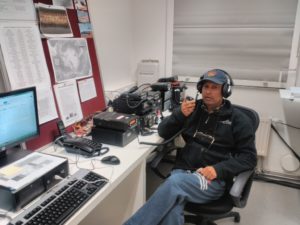 Antarctic Epic did start long ago with no way to communicate from Antarctica to the rest of the world, then Guglielmo Marconi, an Italian inventor and electrical engineer, known for his pioneering work on long-distance radio transmission and for his development of radio telegraph system, show the world the power of Radio transmission.
Antarctic Epic did start long ago with no way to communicate from Antarctica to the rest of the world, then Guglielmo Marconi, an Italian inventor and electrical engineer, known for his pioneering work on long-distance radio transmission and for his development of radio telegraph system, show the world the power of Radio transmission.
Later one after WW1 & WW2 the Nations signed the Antarctic Treaty and the Antarctic Adventure begun. From that time, in the 50thies, the Radio was the unique way to be in touch from the newly built Antarctic Research Stations and therest of the world.
From that time, being a licensed Radio Amateur was a privilege of few technicians involved in the Antarctic Campaigns and being Radio Amateur, they were mostly communication officers. After the commercial duties and communication with their country’s Antarctic Departments, they had time to use the Base Equipments to talk to the family using other Ham fellows with Phone Patch to talk to their families, and to other Ham radio men, all over the world.
A new era did start: DX with Antarctica and yes, a contact using a simple Radio transceiver from Antarctica to the rest of the world was, and is still amazing. The interest did grow fast and became a fever, a real excitement a real passion.
At that time every Antarctic Base, every Refuge, every remote camp was equipped with Transceiver for HF communications, antenna, generator or other power supply sources.
Most of the Bases did install big towers and rotary antenna system, using amplifiers to allow more chance to send robust signals on the air. On the other side, the worldwide Ham community, hunting contacts with Antarctica, did the same; all involved in a kind of passion for the so called very long distance call, known as DX.
 QSL confirmation for a contact with an Antarctic Station was, and still is something to exhibit. On the meantime the first websites dedicated to the Antarctic Chasers did start to be online, as for example WAP-Worldwide Antarctic Program www.waponline.it since 1979. On it several features such as the most accurate Dbase (WAP-WADA) of Antarctic Stations, Remote Camps, Refuges, Huts and permanent settlements sorted by Country, Lat & Long and exact location.
QSL confirmation for a contact with an Antarctic Station was, and still is something to exhibit. On the meantime the first websites dedicated to the Antarctic Chasers did start to be online, as for example WAP-Worldwide Antarctic Program www.waponline.it since 1979. On it several features such as the most accurate Dbase (WAP-WADA) of Antarctic Stations, Remote Camps, Refuges, Huts and permanent settlements sorted by Country, Lat & Long and exact location.
Another huge Dbase (WAP-WACA) has been built; it lists over 4500 different callsigns in use or used in the past in Antarctica, Sub & Peri Antarctic areas, all available for free on line.
Time goes fast and we did enter quickly in the era of Internet. Very few young boys are still excited or fascinated by Ham radio, even if in Antarctica HF & VHF communications are still important and very much used to keep and establish contacts with remote field camps, with the researchers working outside, and with the helicopters or aircrafts to the main Stations or Bases.
Radio is probably considered by the young generation somewhat obsolete, something surpassed, something out of fashion … nothing could be more wrong! Radio remains a safe option in case of emergency, when internet black out, when other communication devises may fail, the radio remains, it does not need repeaters, as the radio waves propagate in space!
HF transmissions are therefore subjected to the Propagation condition which is influenced by the solar activity and in particular periods of the year, operators must know the MUF (Maximum Usable Frequency) and check Propagation Prediction tables in order to know when and in which direction looking for to make some possible contacts
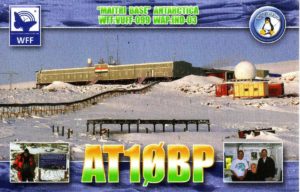 Bhagwati Prasad Semwal is a good experienced Ham Radio Operator, licensed as VU3BPZ, and operating from Antarctica since 2001. Bagwati Prasad (Ex-20,24,29th, Maitri & 31th,Bharati, WOT )has been active from several Antarctic sites as VU3BPZ/P, VU3BPZ/RI1, AT1ØBP, VU3BPZ/MM and actually he is part of the 35th ISEA (2015-2016) based at Bharati Station (69°S, 076°E), Larsemann Hills, Antarctica where he operates as 8T2BH.
Bhagwati Prasad Semwal is a good experienced Ham Radio Operator, licensed as VU3BPZ, and operating from Antarctica since 2001. Bagwati Prasad (Ex-20,24,29th, Maitri & 31th,Bharati, WOT )has been active from several Antarctic sites as VU3BPZ/P, VU3BPZ/RI1, AT1ØBP, VU3BPZ/MM and actually he is part of the 35th ISEA (2015-2016) based at Bharati Station (69°S, 076°E), Larsemann Hills, Antarctica where he operates as 8T2BH.
Worldwide Ham Radio Community is grateful to the Indian Antarctic Dept. for putting licensed Ham radio operators among the Teams overwintering in Antarctica; India did a real great job with the Hams involved in Antarctica up to now; a mention has to be given to:
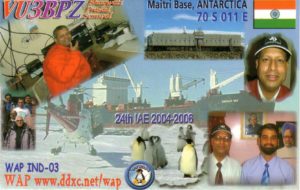 ATØA operating from Daskshin Gangotry Base in the 8Øties, AT3D, VU3HKQ, VU2AXA, VU2JBK, VU3RAY, VU2DMT who have been active from Maitri Base, Indian Bay and Bharati Stations giving a huge number of Antarctic chasers worldwide, a chance to log all the 3 main Indian Scientific Stations in their log with different callsigns.
ATØA operating from Daskshin Gangotry Base in the 8Øties, AT3D, VU3HKQ, VU2AXA, VU2JBK, VU3RAY, VU2DMT who have been active from Maitri Base, Indian Bay and Bharati Stations giving a huge number of Antarctic chasers worldwide, a chance to log all the 3 main Indian Scientific Stations in their log with different callsigns.
Actually propagation is not in a good shape; solar flux, sunspot and A index are at a low level, but taking care of the rare openings on different bands, is possible to establish good contacts with a range of 10-15.000 km.
What is actually missed in the Indian Bases is a rotating Log periodic beam antenna, able to cover all HF bands in case of internet black out or emergency, a liner amplifier in order to ensure a robust signal in case of lack of propagation.
In addition another tool is available for Hams, and that is the VOACAP Prediction available online at:
http://www.voacap.com/prediction.html .
This web site gives an idea to a Radio operator which band of the HF Band plan is the best one to be used and percentage of chances to make good contacts. Actually conditions are very low and infact just the bands from 18 to 24 MHz offer 40% of possibility to make contacts.
During the 35th Indian Antarctic Scientific Expedition (2015-2016) we did a lot of propagation testing on different bands from 10 mts through 40 mts SSB and we noticed a very fast changing conditions and so far only about 100 QSOs have been made as 8T2BH from Bharati Station, even if with 15 different Countries. Nothing to compare with 2011-2012’s season when the QSOs made were over 1000, or from Maitri Station where conditions were so much favorable.
Now it could be propagation will change, no more Auroras or magnetic storms which are causing terrific noise on the band. I hope to be able to keep uphold the Indian pride and using the privilege to be here in Antarctica for the 5th time as Ham Radio and Communication Officer to fulfill the many requests for QSOs by Radio amateurs operators around the world.
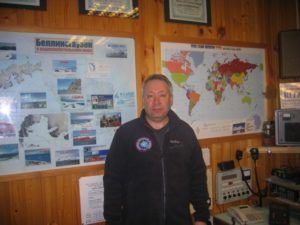 Alex Ushakov, UA1OJL (picture aside) is actually operating as RI1ANO. He will be there till march 2018 from the Russian Bellingshausen Station (WAP RUS-Ø1) and he’s supposed to be back home by April 2018.
Alex Ushakov, UA1OJL (picture aside) is actually operating as RI1ANO. He will be there till march 2018 from the Russian Bellingshausen Station (WAP RUS-Ø1) and he’s supposed to be back home by April 2018.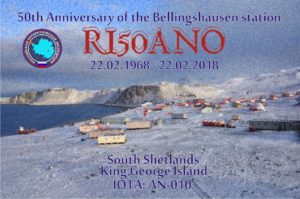

 As global warming reshapes the Arctic and Antarctic, a new designed Museum like a giant iceberg, dedicated to the Poles has been opened last march 2017. The Museum built by the son of a renowned French explorer aims to show “the beauty of polar landscapes” and illustrate the consequences of climate change. The new museum dedicated entirely to the Arctic and the Antarctic has opened in Prémanon, France.
As global warming reshapes the Arctic and Antarctic, a new designed Museum like a giant iceberg, dedicated to the Poles has been opened last march 2017. The Museum built by the son of a renowned French explorer aims to show “the beauty of polar landscapes” and illustrate the consequences of climate change. The new museum dedicated entirely to the Arctic and the Antarctic has opened in Prémanon, France. Finally we did find a time to upload another batch of Antarctic QSLs into the WAP Antarctic QSL Gallery. Some of the cards are Old and rare, some are New to confirm last activities and new callsigns showed up recently from Antarctica.
Finally we did find a time to upload another batch of Antarctic QSLs into the WAP Antarctic QSL Gallery. Some of the cards are Old and rare, some are New to confirm last activities and new callsigns showed up recently from Antarctica. Enter the page by clicking WAP Antarctic QSL Gallery on the main page, then click on enter. Now you are on the Gallery; always remember to click the red square with a ”+” inside and you will open the Country list, one county by one and you can see all the cards loaded- There are several galleries on the Album:
Enter the page by clicking WAP Antarctic QSL Gallery on the main page, then click on enter. Now you are on the Gallery; always remember to click the red square with a ”+” inside and you will open the Country list, one county by one and you can see all the cards loaded- There are several galleries on the Album: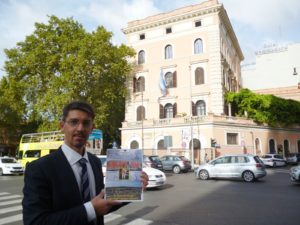 Last 24 & 25 sept. Prof Ph D Julius Fabbri went to MAECI (Ministry of Foreign Affairs and International Cooperation) in Rome for a second time, to discuss the progress of its IPSSIA Project.
Last 24 & 25 sept. Prof Ph D Julius Fabbri went to MAECI (Ministry of Foreign Affairs and International Cooperation) in Rome for a second time, to discuss the progress of its IPSSIA Project. .
.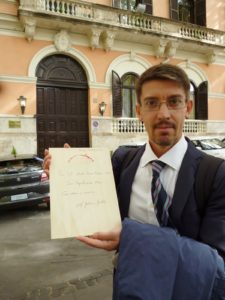
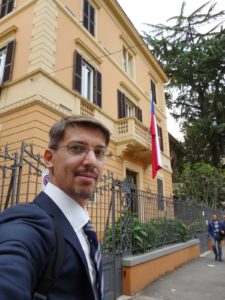 An envelope has been delivered “own hands” to Tomas Ferrari‘s new Argentina ambassador in Italy. –Open Argentina to the world’ – was the choice of Ferrari when he was nominated as Argentina’s representative to Rome, and this is certainly a good wish.
An envelope has been delivered “own hands” to Tomas Ferrari‘s new Argentina ambassador in Italy. –Open Argentina to the world’ – was the choice of Ferrari when he was nominated as Argentina’s representative to Rome, and this is certainly a good wish.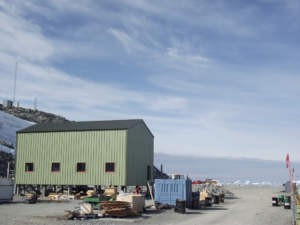
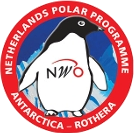 opened the first Dutch Laboratory in Antarctica and it has been placed near the British Rothera Research Station.
opened the first Dutch Laboratory in Antarctica and it has been placed near the British Rothera Research Station.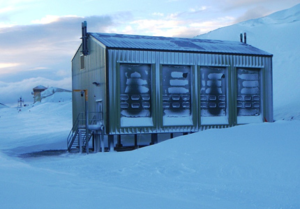 and climate change on the Antarctic Peninsula, study the influence of glacier melt water on marine microbial communities in Ryder Bay and Greenhouse gases.
and climate change on the Antarctic Peninsula, study the influence of glacier melt water on marine microbial communities in Ryder Bay and Greenhouse gases.
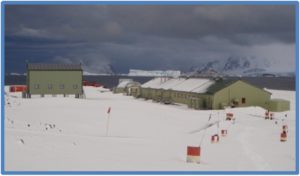
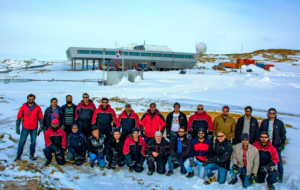 The 36th ISEA Team (Indian Scientific Expedition to Antarctica) at Bharati Station is almost at the end of its overwintering task, after a successful winter at 69° 24’ 28” South, 76° 11’ 14” East.
The 36th ISEA Team (Indian Scientific Expedition to Antarctica) at Bharati Station is almost at the end of its overwintering task, after a successful winter at 69° 24’ 28” South, 76° 11’ 14” East. but still no Europeans on his log.
but still no Europeans on his log. Base A now welcomes visitors to the site every Austral summer, in order to promote the work of the UKAHT on the Peninsula and in the UK and to give visitors a taste of base life from the early days of British occupation.
Base A now welcomes visitors to the site every Austral summer, in order to promote the work of the UKAHT on the Peninsula and in the UK and to give visitors a taste of base life from the early days of British occupation. In the photos you can see the three buildings at Port Lockroy: Bransfield House, the Boat Shed and the Nissen Hut. In the distance you can also see the anemometer tower as well as the antenna mast (in 1957 Port Lockroy used to have eight antenna masts which were used for high frequency radio communication).
In the photos you can see the three buildings at Port Lockroy: Bransfield House, the Boat Shed and the Nissen Hut. In the distance you can also see the anemometer tower as well as the antenna mast (in 1957 Port Lockroy used to have eight antenna masts which were used for high frequency radio communication). In a first for the Australian Antarctic Program, nine tonnes of cargo was parachuted from the back of a Royal Australian Airforce C-17A Globemaster III and on to the sea ice near Davis Research Station (WAP AUS-Ø3) on Sept.20-2017
In a first for the Australian Antarctic Program, nine tonnes of cargo was parachuted from the back of a Royal Australian Airforce C-17A Globemaster III and on to the sea ice near Davis Research Station (WAP AUS-Ø3) on Sept.20-2017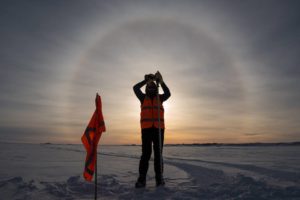 The pallets were ripped by the Australian Army’s 176 Air Dispatch Squadron.
The pallets were ripped by the Australian Army’s 176 Air Dispatch Squadron.
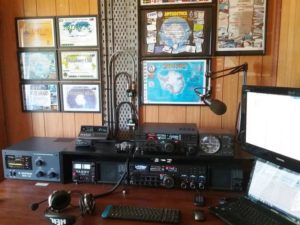
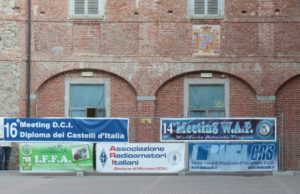 Great time this morning at the 14th WAP Meeting
Great time this morning at the 14th WAP Meeting 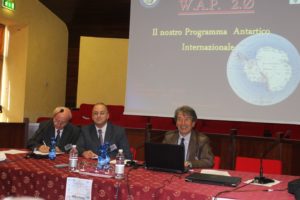
 Authorities present: Luca Robaldo,
Authorities present: Luca Robaldo, 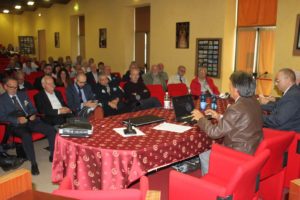
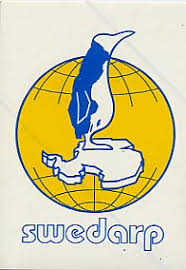 Kirvanveggen Camp is listed on our WAP-WADA Directory and it was activated by Radio amateur (Callsign 7S8AAA) in the 90ties.
Kirvanveggen Camp is listed on our WAP-WADA Directory and it was activated by Radio amateur (Callsign 7S8AAA) in the 90ties.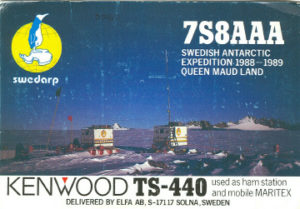
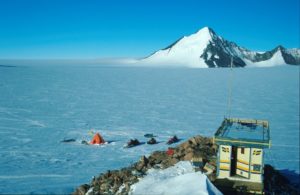 Just few notes about SVEA (WAP SVE-Ø2)
Just few notes about SVEA (WAP SVE-Ø2)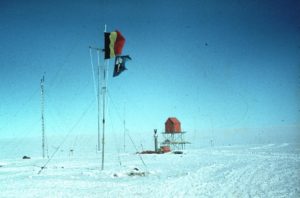 The third International Polar Year of 1958-1959 heralded the second important phase of the Belgian presence in Antarctica. This year was also known as the International Geophysical Year (IGY), in which not less than sixty-four nations signalled their commitment to study the physical characteristics of the earth.
The third International Polar Year of 1958-1959 heralded the second important phase of the Belgian presence in Antarctica. This year was also known as the International Geophysical Year (IGY), in which not less than sixty-four nations signalled their commitment to study the physical characteristics of the earth.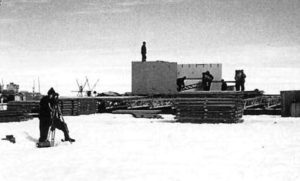 he Russians set up their Vostok Base at its least accessible point, the middle of the East-Antarctic icecap.
he Russians set up their Vostok Base at its least accessible point, the middle of the East-Antarctic icecap. ase has been reconstructed in 1964 and closed in February 1967.
ase has been reconstructed in 1964 and closed in February 1967.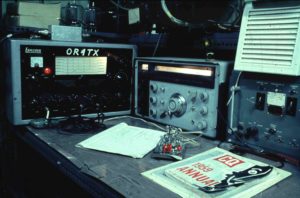 were: OR4KR, OR4OR, OR4RW, OR4TX, OR4TZ, OR4VN and OR5RK).
were: OR4KR, OR4OR, OR4RW, OR4TX, OR4TZ, OR4VN and OR5RK).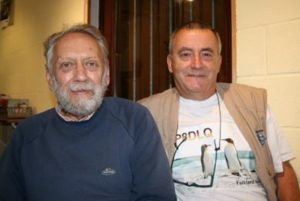 Our good friend Ghis ON5NT, went to see ON4TX/OR4TX personally at his Radioclub in Waterloo, near Brussels and Roger was extremely kind to give him the reminds that are part of his life. Pictures are from the 1960 Belgian expedition. (pic on the right: Roger ON4TX and Ghis ON5NT)
Our good friend Ghis ON5NT, went to see ON4TX/OR4TX personally at his Radioclub in Waterloo, near Brussels and Roger was extremely kind to give him the reminds that are part of his life. Pictures are from the 1960 Belgian expedition. (pic on the right: Roger ON4TX and Ghis ON5NT)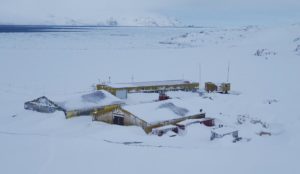 On the last 3 weeks Sebastian Gleich, SQ1SGB has been reported active from the Polish Antarctic Station Henryk Arctowski (WAP POL-Ø1) as HFØARC on 20 & 40 mts.
On the last 3 weeks Sebastian Gleich, SQ1SGB has been reported active from the Polish Antarctic Station Henryk Arctowski (WAP POL-Ø1) as HFØARC on 20 & 40 mts.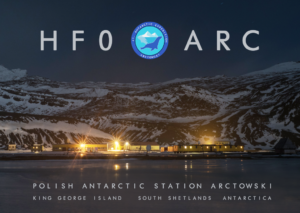
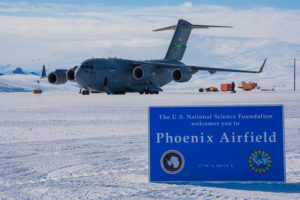 snow runway (WAP USA-NEW) has replaced Pegasus Field (WAP USA-42). This runway is capable of handling wheeled aircraft, that have included to date: Lockheed C-5 Galaxy, Lockheed C-141 Starlifter, Boeing C-17 Globemaster III, Lockheed C-130 Hercules and Lockheed P-3 Orion.
snow runway (WAP USA-NEW) has replaced Pegasus Field (WAP USA-42). This runway is capable of handling wheeled aircraft, that have included to date: Lockheed C-5 Galaxy, Lockheed C-141 Starlifter, Boeing C-17 Globemaster III, Lockheed C-130 Hercules and Lockheed P-3 Orion.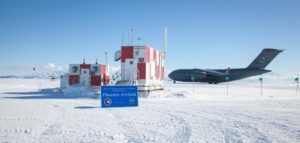 Ex Pegasus Field Runway (ICAO: NZPG) WAP USA-42
Ex Pegasus Field Runway (ICAO: NZPG) WAP USA-42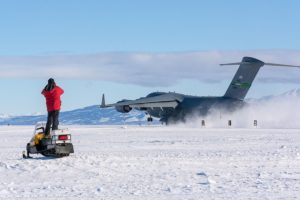 promise…it was developed originally as a “blue ice” runway (meaning that it consisted of long-term ice that was neither accumulating nor ablating). That condition is more actually applied to colder land-based inland locations such as Patriot Hills, rather than a warmer location on shelf ice.
promise…it was developed originally as a “blue ice” runway (meaning that it consisted of long-term ice that was neither accumulating nor ablating). That condition is more actually applied to colder land-based inland locations such as Patriot Hills, rather than a warmer location on shelf ice.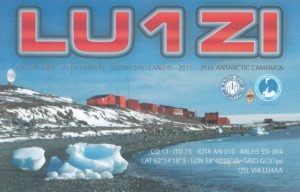 Carlini is a permanent Antarctic Scientific Station, located at 25 de Mayo Is. (aka King George Is.), in the South Shetland Islands. It is operated and administrated by the National Antarctic Division (DNA) of the Foreing Affairs Ministry of Argentina.
Carlini is a permanent Antarctic Scientific Station, located at 25 de Mayo Is. (aka King George Is.), in the South Shetland Islands. It is operated and administrated by the National Antarctic Division (DNA) of the Foreing Affairs Ministry of Argentina.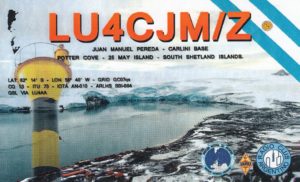
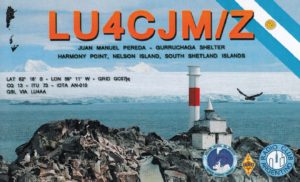 Francisco de Gurruchaga Antarctic Refuge (62°14′ 03″ South, 59°10′ 02″ West) built on Dec. 15, 1954 is placed in Harmony Point, Nelson Island, South Shetland Island. The administration depends on the Argentinian Naval Army. Proposed by Argentina, this area was originally designated as Site of Special Scientific Interest No. 14 under Antarctic ATCM Recommendation XIII-8 (1985), because the Area is an excellent example of the maritime Antarctic communities of birds and land ecosystems present in South Shetland Islands, making possibilities to carry out long-term research programs without damage or harmful interference.
Francisco de Gurruchaga Antarctic Refuge (62°14′ 03″ South, 59°10′ 02″ West) built on Dec. 15, 1954 is placed in Harmony Point, Nelson Island, South Shetland Island. The administration depends on the Argentinian Naval Army. Proposed by Argentina, this area was originally designated as Site of Special Scientific Interest No. 14 under Antarctic ATCM Recommendation XIII-8 (1985), because the Area is an excellent example of the maritime Antarctic communities of birds and land ecosystems present in South Shetland Islands, making possibilities to carry out long-term research programs without damage or harmful interference.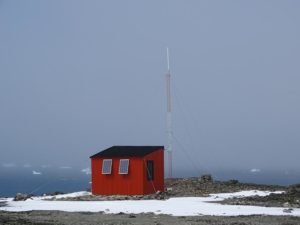 Antarctic Refuges are facilities open to all countries, to be used in emergencies or to support activities in the field. They are equipped with provisions, fuel, generators and communications equipment, accommodation facilities and other logistics.
Antarctic Refuges are facilities open to all countries, to be used in emergencies or to support activities in the field. They are equipped with provisions, fuel, generators and communications equipment, accommodation facilities and other logistics.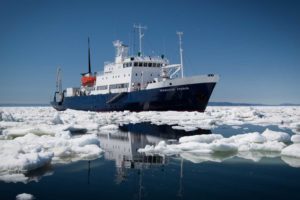 Plans appear to be melding together for a Maritime Mobile Expedition to the shores of Antarctica in February 2018.
Plans appear to be melding together for a Maritime Mobile Expedition to the shores of Antarctica in February 2018.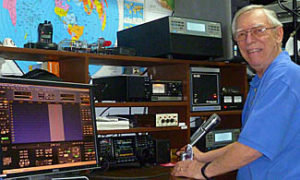
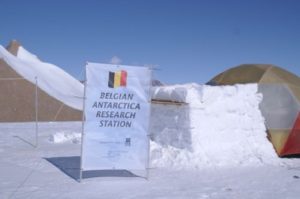 When we went across some notes, we found that, while studying a best location site to install its New Antarctic Station, a Belgian Team, went to Antarctica and set a Base Camp called Utsteinen camp which was fully operational for few months.
When we went across some notes, we found that, while studying a best location site to install its New Antarctic Station, a Belgian Team, went to Antarctica and set a Base Camp called Utsteinen camp which was fully operational for few months.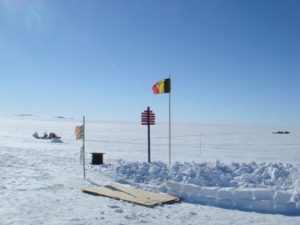
 A brief history: The Republic of Belarus joined the Antarctic Treaty in 2006 and, in that same year, approved the National program for Polar research which is called “Monitoring of Earth’s Polar areas” ensuring activity of the Arctic and Antarctic expeditions for 2007-2010 and for the period until 2015. Soon after, in 2008, it ratified the Environmental Protocol.
A brief history: The Republic of Belarus joined the Antarctic Treaty in 2006 and, in that same year, approved the National program for Polar research which is called “Monitoring of Earth’s Polar areas” ensuring activity of the Arctic and Antarctic expeditions for 2007-2010 and for the period until 2015. Soon after, in 2008, it ratified the Environmental Protocol. The main principles of activity of the Republic of Belarus in Antarctica are a system approach to the creation of the national Antarctic infrastructure and the organization of research, orientation of works for integration to international research programs, development of international cooperation in order to strengthen the Antarctic Treaty System, as well as development, consideration and recommendation to their Government of actions assisting in realization of principles and objects of the Antarctic Treaty.
The main principles of activity of the Republic of Belarus in Antarctica are a system approach to the creation of the national Antarctic infrastructure and the organization of research, orientation of works for integration to international research programs, development of international cooperation in order to strengthen the Antarctic Treaty System, as well as development, consideration and recommendation to their Government of actions assisting in realization of principles and objects of the Antarctic Treaty.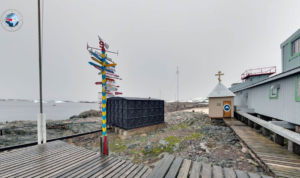 “When we send polar explorers to the South Pole we don’t ask about their confession, but every person can have a wish to be alone, to pray. Why don’t we build a church?” said Director of the National Ukrainian Antarctic Scientific Center, Valery Litvinov .
“When we send polar explorers to the South Pole we don’t ask about their confession, but every person can have a wish to be alone, to pray. Why don’t we build a church?” said Director of the National Ukrainian Antarctic Scientific Center, Valery Litvinov .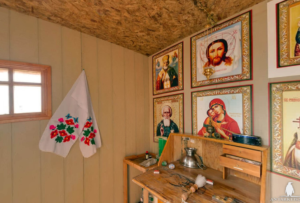
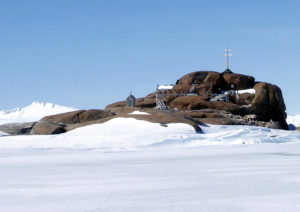 Buromskiy Island holds a Cemetery for several citizens of the Soviet Union, Czechoslovakia, German Democratic Republic and Switzerland who died in the performance of their duties while serving as members of Soviet and Russian Antarctic expeditions. It has been designated a Historic Site or Monument (HSM 9) following a proposal by Russia to the Antarctic Treaty Consultative Meeting
Buromskiy Island holds a Cemetery for several citizens of the Soviet Union, Czechoslovakia, German Democratic Republic and Switzerland who died in the performance of their duties while serving as members of Soviet and Russian Antarctic expeditions. It has been designated a Historic Site or Monument (HSM 9) following a proposal by Russia to the Antarctic Treaty Consultative Meeting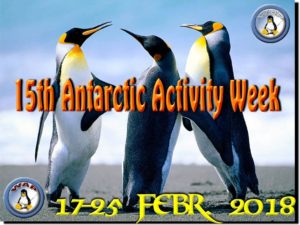 John Landrigan KA4RXP will be active as KA4RXP/MM from on board of M/V Spirit of Enderby from Febr. 8 through March 8 sailing Antarctica. The operation time falls in between the 15th Antarctic Activity Week.
John Landrigan KA4RXP will be active as KA4RXP/MM from on board of M/V Spirit of Enderby from Febr. 8 through March 8 sailing Antarctica. The operation time falls in between the 15th Antarctic Activity Week.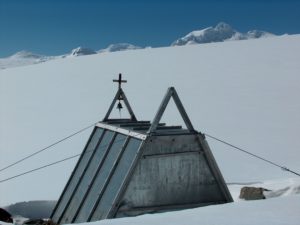 The Orthodox presence in Antarctica arises as parts of various expeditions from major Orthodox Christian Nations to the continent as there is not permanent population in Antarctica.
The Orthodox presence in Antarctica arises as parts of various expeditions from major Orthodox Christian Nations to the continent as there is not permanent population in Antarctica.
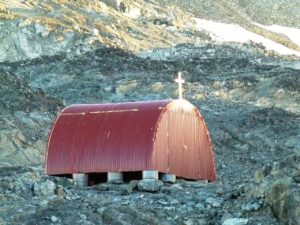 people, geologists, biologists, doctors, meteorologists, botanists and others .
people, geologists, biologists, doctors, meteorologists, botanists and others .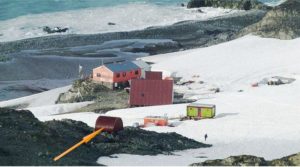
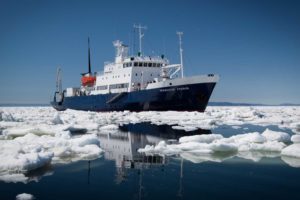 John wrote: -The 50-passenger M/V Spirit of Enderby is described as an ‘intimate’ exploration vessel with a reinforced hull. It apparently is pretty cramped and the bathroom is down the hall. The Captain and crew are Russian and I was advised to bring a potent surge protector .
John wrote: -The 50-passenger M/V Spirit of Enderby is described as an ‘intimate’ exploration vessel with a reinforced hull. It apparently is pretty cramped and the bathroom is down the hall. The Captain and crew are Russian and I was advised to bring a potent surge protector .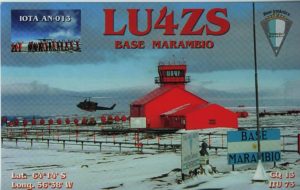 On last March 11, the Radio station LU4ZS at Base Marambio did start the 2016 Ham Activation, promoting the continuity of successful Radio-Amateur operation of the past 2013/14 Antarctic campaign, in which hundreds of Shortwave contacts were made worldwide. This year 2017, it has been planned to carry out another activation.
On last March 11, the Radio station LU4ZS at Base Marambio did start the 2016 Ham Activation, promoting the continuity of successful Radio-Amateur operation of the past 2013/14 Antarctic campaign, in which hundreds of Shortwave contacts were made worldwide. This year 2017, it has been planned to carry out another activation.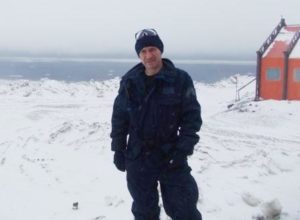

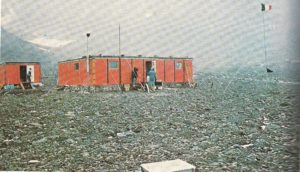 December 1975: 15 Italians did challenge the climatic conditions, economic difficulties and political inertia to build a Base in the coldest and inhospitable site of the planet, with temperatures that in the “hot” months reach 19 degrees below zero and during the long winter of the sub-southern hemisphere go down to -50°C. The Expedition arrives before the accession of Italy to the Antarctic Treaty, before the PNRA, the National Research Program at the South Pole.
December 1975: 15 Italians did challenge the climatic conditions, economic difficulties and political inertia to build a Base in the coldest and inhospitable site of the planet, with temperatures that in the “hot” months reach 19 degrees below zero and during the long winter of the sub-southern hemisphere go down to -50°C. The Expedition arrives before the accession of Italy to the Antarctic Treaty, before the PNRA, the National Research Program at the South Pole.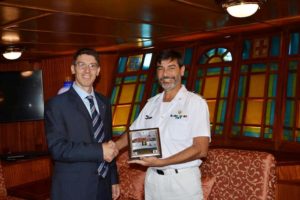 Everything else has disappeared in nothing” wrote Renato Cepparo in his memories.
Everything else has disappeared in nothing” wrote Renato Cepparo in his memories.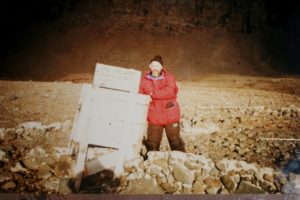 Stanislaw Miranski SP3BGD, send us a picture taken in April 1998. Here is the remains of Italian Antarctic Station “Giacomo Bove” – Italia Valley on King George island.
Stanislaw Miranski SP3BGD, send us a picture taken in April 1998. Here is the remains of Italian Antarctic Station “Giacomo Bove” – Italia Valley on King George island.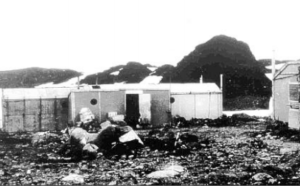 The Station with two buildings able to guest 8 people, was originally built by the Soviet Antarctic Expeditions the Oct. 16th 1956 and named Oazis then, on 23rd January 1959, it has been handed over to the Academy of Sciences of the Polish People’s Republic by the Soviet Academy. The Polish named it Dobrowolski Station in memory of Antoni B. Dobrowolski (1872-1954), geophysicist and glaciologist, who participated in the Belgica Antarctic Expedition (1877-79).
The Station with two buildings able to guest 8 people, was originally built by the Soviet Antarctic Expeditions the Oct. 16th 1956 and named Oazis then, on 23rd January 1959, it has been handed over to the Academy of Sciences of the Polish People’s Republic by the Soviet Academy. The Polish named it Dobrowolski Station in memory of Antoni B. Dobrowolski (1872-1954), geophysicist and glaciologist, who participated in the Belgica Antarctic Expedition (1877-79). 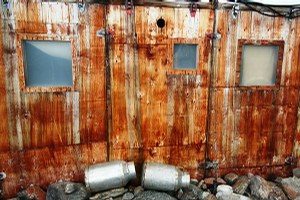
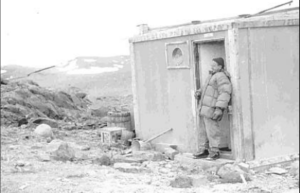 The Soviet Union became interested in the Bunger Hills again in the late 1980s, and built a new station – Oazis-2 – a few hundred meters to the west of Dobrowolski. The station was used for summer visits up to the mid-1990s (Bunger Oasis Station WAP RUS-NEW)
The Soviet Union became interested in the Bunger Hills again in the late 1980s, and built a new station – Oazis-2 – a few hundred meters to the west of Dobrowolski. The station was used for summer visits up to the mid-1990s (Bunger Oasis Station WAP RUS-NEW)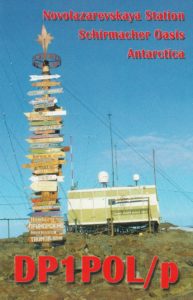 Felix Riess (DL5XL) has been active as DP1POL/p for a short period of time from the Russian Station Novolazarevskaya (WAP RUS-Ø9) while waiting the ALCI flight from Novo Runway (WAP MNB-Ø6) to Cape Town.
Felix Riess (DL5XL) has been active as DP1POL/p for a short period of time from the Russian Station Novolazarevskaya (WAP RUS-Ø9) while waiting the ALCI flight from Novo Runway (WAP MNB-Ø6) to Cape Town.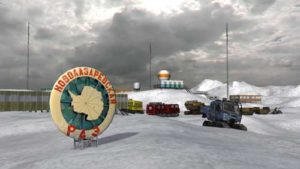
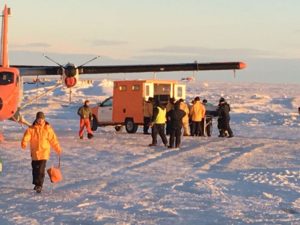 In an unprecedented operation, the Argentinean Armed Forces planned a medical evacuation of the second officer, electrician Héctor Bulacio, from the Orcadas Base to the hospital in Ushuaia. The 38-year-old man was in danger if thye did not move him; he had suffered fractures in his legs. A Rescue by sea was impossible because in winter time the Base is surrounded by 110 kilometers of ice field.
In an unprecedented operation, the Argentinean Armed Forces planned a medical evacuation of the second officer, electrician Héctor Bulacio, from the Orcadas Base to the hospital in Ushuaia. The 38-year-old man was in danger if thye did not move him; he had suffered fractures in his legs. A Rescue by sea was impossible because in winter time the Base is surrounded by 110 kilometers of ice field. Antarctic Epic did start long ago with no way to communicate from Antarctica to the rest of the world, then Guglielmo Marconi, an Italian inventor and electrical engineer, known for his pioneering work on long-distance radio transmission and for his development of radio telegraph system, show the world the power of Radio transmission.
Antarctic Epic did start long ago with no way to communicate from Antarctica to the rest of the world, then Guglielmo Marconi, an Italian inventor and electrical engineer, known for his pioneering work on long-distance radio transmission and for his development of radio telegraph system, show the world the power of Radio transmission. QSL confirmation for a contact with an Antarctic Station was, and still is something to exhibit. On the meantime the first websites dedicated to the Antarctic Chasers did start to be online, as for example WAP-Worldwide Antarctic Program
QSL confirmation for a contact with an Antarctic Station was, and still is something to exhibit. On the meantime the first websites dedicated to the Antarctic Chasers did start to be online, as for example WAP-Worldwide Antarctic Program  Bhagwati Prasad Semwal is a good experienced Ham Radio Operator, licensed as VU3BPZ, and operating from Antarctica since 2001. Bagwati Prasad (Ex-20,24,29th, Maitri & 31th,Bharati, WOT )has been active from several Antarctic sites as VU3BPZ/P, VU3BPZ/RI1, AT1ØBP, VU3BPZ/MM and actually he is part of the 35th ISEA (2015-2016) based at Bharati Station (69°S, 076°E), Larsemann Hills, Antarctica where he operates as 8T2BH.
Bhagwati Prasad Semwal is a good experienced Ham Radio Operator, licensed as VU3BPZ, and operating from Antarctica since 2001. Bagwati Prasad (Ex-20,24,29th, Maitri & 31th,Bharati, WOT )has been active from several Antarctic sites as VU3BPZ/P, VU3BPZ/RI1, AT1ØBP, VU3BPZ/MM and actually he is part of the 35th ISEA (2015-2016) based at Bharati Station (69°S, 076°E), Larsemann Hills, Antarctica where he operates as 8T2BH. ATØA operating from Daskshin Gangotry Base in the 8Øties, AT3D, VU3HKQ, VU2AXA, VU2JBK, VU3RAY, VU2DMT who have been active from Maitri Base, Indian Bay and Bharati Stations giving a huge number of Antarctic chasers worldwide, a chance to log all the 3 main Indian Scientific Stations in their log with different callsigns.
ATØA operating from Daskshin Gangotry Base in the 8Øties, AT3D, VU3HKQ, VU2AXA, VU2JBK, VU3RAY, VU2DMT who have been active from Maitri Base, Indian Bay and Bharati Stations giving a huge number of Antarctic chasers worldwide, a chance to log all the 3 main Indian Scientific Stations in their log with different callsigns.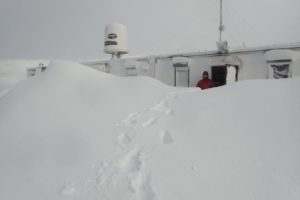 The station was established on 26 February 1977.
The station was established on 26 February 1977.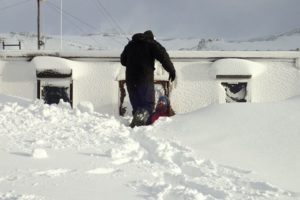
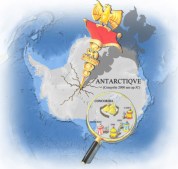 The sixteenth edition (release 1.30) of WAP WACA & WADA Directories are available to download. Just go to the “Download Section” and feel free to save them both on your PC.
The sixteenth edition (release 1.30) of WAP WACA & WADA Directories are available to download. Just go to the “Download Section” and feel free to save them both on your PC.
 The Antarctic Circumpolar Current is the only ocean current to circle the planet and the largest wind-driven current on Earth. It’s also 30% more powerful than scientists realized.
The Antarctic Circumpolar Current is the only ocean current to circle the planet and the largest wind-driven current on Earth. It’s also 30% more powerful than scientists realized.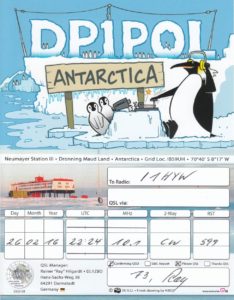 Felix Riess DL5XL (aka N5BC) is operating DP1POL callsign from Antarctica since 2002.
Felix Riess DL5XL (aka N5BC) is operating DP1POL callsign from Antarctica since 2002.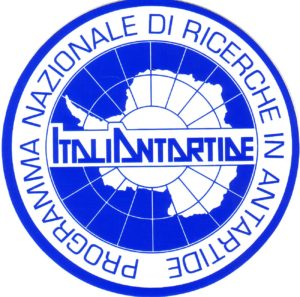 PNRA (Italian National Research Program in Antarctica) via CNR and ENEA, is managing the Italian Bases in Antarctica. There is a call for journalists to participate the XXXIII Italian Expedition in Antarctica.
PNRA (Italian National Research Program in Antarctica) via CNR and ENEA, is managing the Italian Bases in Antarctica. There is a call for journalists to participate the XXXIII Italian Expedition in Antarctica.
 Alex Turkeev, RD1AV, the actual Chief and radio operator at the Russian Vostok Station is still overwintering at Vostok where he will remain till February 10, 2018.
Alex Turkeev, RD1AV, the actual Chief and radio operator at the Russian Vostok Station is still overwintering at Vostok where he will remain till February 10, 2018.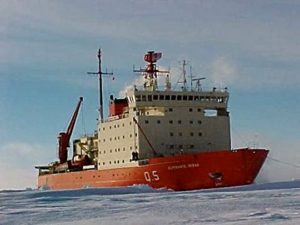 Argentina’s Navy icebreaker ARA Almirante Irizar is back on sea and next September will be ready to sail to Antarctica following almost ten years of recovery and refurbishing after she caught fire in 2007 when returning from Antarctica and was considered almost a wreck given the magnitude of the damages experienced.
Argentina’s Navy icebreaker ARA Almirante Irizar is back on sea and next September will be ready to sail to Antarctica following almost ten years of recovery and refurbishing after she caught fire in 2007 when returning from Antarctica and was considered almost a wreck given the magnitude of the damages experienced.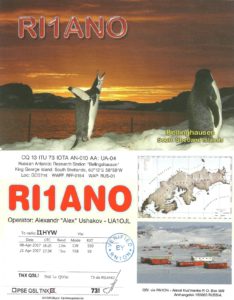 Another “new one” WACA in our Antarctic QSL collection and a WAP RUS-Ø1 for WADA
Another “new one” WACA in our Antarctic QSL collection and a WAP RUS-Ø1 for WADA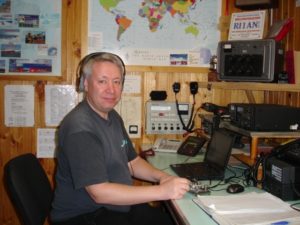
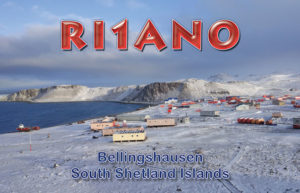
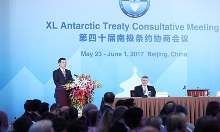 The Antarctic Treaty Consultative Meeting (ATCM) is the annual meeting for all parties of the Antarctic Treaty to discuss pressing Antarctic issues. Only consultative parties – parties that have demonstrated their interest in Antarctica by ‘conducting substantial research activity there’ – are allowed to take part in decision-making processes. This is the first time that China hosts the ATCM, which attracted a lot of attention both within and outside China.
The Antarctic Treaty Consultative Meeting (ATCM) is the annual meeting for all parties of the Antarctic Treaty to discuss pressing Antarctic issues. Only consultative parties – parties that have demonstrated their interest in Antarctica by ‘conducting substantial research activity there’ – are allowed to take part in decision-making processes. This is the first time that China hosts the ATCM, which attracted a lot of attention both within and outside China.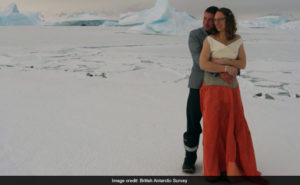 Polar field guides Julie Baum and Tom Sylvester got married in sub-zero temperatures in a two-day celebration.
Polar field guides Julie Baum and Tom Sylvester got married in sub-zero temperatures in a two-day celebration. Climate change will cause ice-free areas on Antarctica to increase by up to a quarter by 2100, threatening the diversity of the unique terrestrial plant and animal life that exists there, according to projections from the first study examining the question in detail. If emissions of greenhouse gasses are not reduced, projected warming and changes in snowfall will cause ice-free areas – which currently make up about 1% of Antarctica and are home to all of the continent’s terrestrial plants and animals – to increase by as much as 17,000 square kilometres.
Climate change will cause ice-free areas on Antarctica to increase by up to a quarter by 2100, threatening the diversity of the unique terrestrial plant and animal life that exists there, according to projections from the first study examining the question in detail. If emissions of greenhouse gasses are not reduced, projected warming and changes in snowfall will cause ice-free areas – which currently make up about 1% of Antarctica and are home to all of the continent’s terrestrial plants and animals – to increase by as much as 17,000 square kilometres. Ved Prakash Sandlas, VU2VP, destingushed Scientist & former Cheif controller R&D DRDO did pass away on 6th July 2017. He was good promoter of Ham radio & sent Ham Radio Rigs to Antarctica.
Ved Prakash Sandlas, VU2VP, destingushed Scientist & former Cheif controller R&D DRDO did pass away on 6th July 2017. He was good promoter of Ham radio & sent Ham Radio Rigs to Antarctica.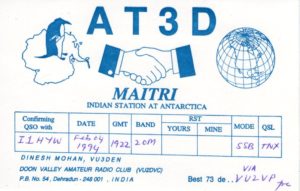
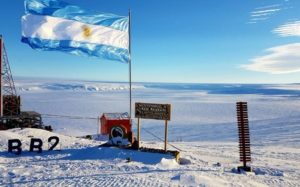
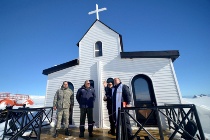 On Thursday 25 September 2014, the Commander in Chief of the IV Air Brigade, General Aviation Brigade Manuel Sainz Salas, did visit the Antarctic Air Base President Eduardo Frei Montalva and attended, with the Commander of the Air Base Group Commander (DA) Gonzalo Opazo, t
On Thursday 25 September 2014, the Commander in Chief of the IV Air Brigade, General Aviation Brigade Manuel Sainz Salas, did visit the Antarctic Air Base President Eduardo Frei Montalva and attended, with the Commander of the Air Base Group Commander (DA) Gonzalo Opazo, t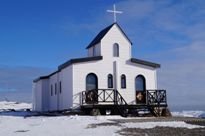 o the reopening ceremony of the Chapel of Santa Maria Reina de la Paz located at Villa Las Estrellas, the largest Chilean town in Antarctica. The Chaplain of the Unity Group Commander (SR) Juan Fuentes, blessed the new premises.
o the reopening ceremony of the Chapel of Santa Maria Reina de la Paz located at Villa Las Estrellas, the largest Chilean town in Antarctica. The Chaplain of the Unity Group Commander (SR) Juan Fuentes, blessed the new premises.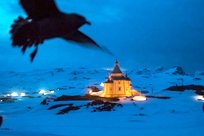 Interesting article pubblished on the New York Times by Ernesto Molina, a Chilean scientist, walking above the Russian Orthodox Church of the Holy Trinity, overlooking the Russian Antarctic base.
Interesting article pubblished on the New York Times by Ernesto Molina, a Chilean scientist, walking above the Russian Orthodox Church of the Holy Trinity, overlooking the Russian Antarctic base.
 There’s a saying about there being no God in Antarctica but from this summer there will also be fewer priests. America’s National Science Foundation has told Christchurch’s Catholic Diocese in NZ it no longer needs local priests on the ice. It was a sad development, but inevitable, says Father Dan Doyle (pic aside), who had been to Antarctica himself 14 times since 1984, and it was an amazing experience for the clergy.
There’s a saying about there being no God in Antarctica but from this summer there will also be fewer priests. America’s National Science Foundation has told Christchurch’s Catholic Diocese in NZ it no longer needs local priests on the ice. It was a sad development, but inevitable, says Father Dan Doyle (pic aside), who had been to Antarctica himself 14 times since 1984, and it was an amazing experience for the clergy.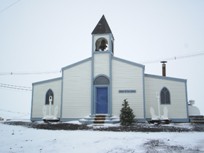 Better communications and internet connections meant people were less isolated while working in Antarctica and the drop-off was noticeable in the past five or six years. When I first went there 30 years ago there was no outside contact except ham radio or a two-minute phone call every few months, Father Doyle said
Better communications and internet connections meant people were less isolated while working in Antarctica and the drop-off was noticeable in the past five or six years. When I first went there 30 years ago there was no outside contact except ham radio or a two-minute phone call every few months, Father Doyle said Lieutenant Colonel Franco Colombo, tell us about his four past seasons in Antarctica in the wake of the Italian Expedition campaigns.
Lieutenant Colonel Franco Colombo, tell us about his four past seasons in Antarctica in the wake of the Italian Expedition campaigns.